The Kingman Visitor center is a chronicled Route 66 museum
- Helen Avaient
- May 3, 2023
- 6 min read
Updated: Oct 23, 2023
Located at the heart of the longest continuous stretch of Route 66 is Kingman Arizona USA. The Kingman Visitor Center and Route 66 museum is definitely worth visiting. It is located downtown in the old Powerhouse, which operated from 1909 until 1938. Not only did the building supply power to Kingman and surrounds it supplied power for the construction of the nearby Hoover Dam until the late 1930s. It has been a museum and visitor centre since 1997.
People from 67 countries have signed the visitors book in the past twelve months, in addition to at least one visitor from each of the 50 USA states. Over 140,000 people travelled route 66 in 2022, with 69 percent of these being USA residents and 30 percent from overseas.
The movie CARS came out in 2003 and was based on a lot of Route 66 towns. The children who watched the movie then are now of a generation where they can drive, and they want to do this historical trip to remind them of their childhood. Prior to that, Route 66 was often driven by baby boomers, retirees, and overseas tourists.
This is the only chronological history museum of route 66, detailing the story of the road, from the Native American trade paths, through the years of the Beale Wagon Road to Route 66, and up to the current day.
In October 1857 Lt EF Beale and his experimental Camel Corps trudged across the present site of Kingman, surveying a wagon road along the 35th parallel, then Fort Mojave was established on the Colorado River. When off duty soldiers found gold and silver in the hills, miners came to discover their fortunes. From the 1870s, cattle roamed the lush green countryside of the natural basin. Covered wagon were often called “Prairie Schooners” as they resembled ships crossing an ocean. Usually loaded with household goods, food and cargo, there was rarely any space for passengers. Therefore, most pioneers would have walked alongside their heavily laden wagons.
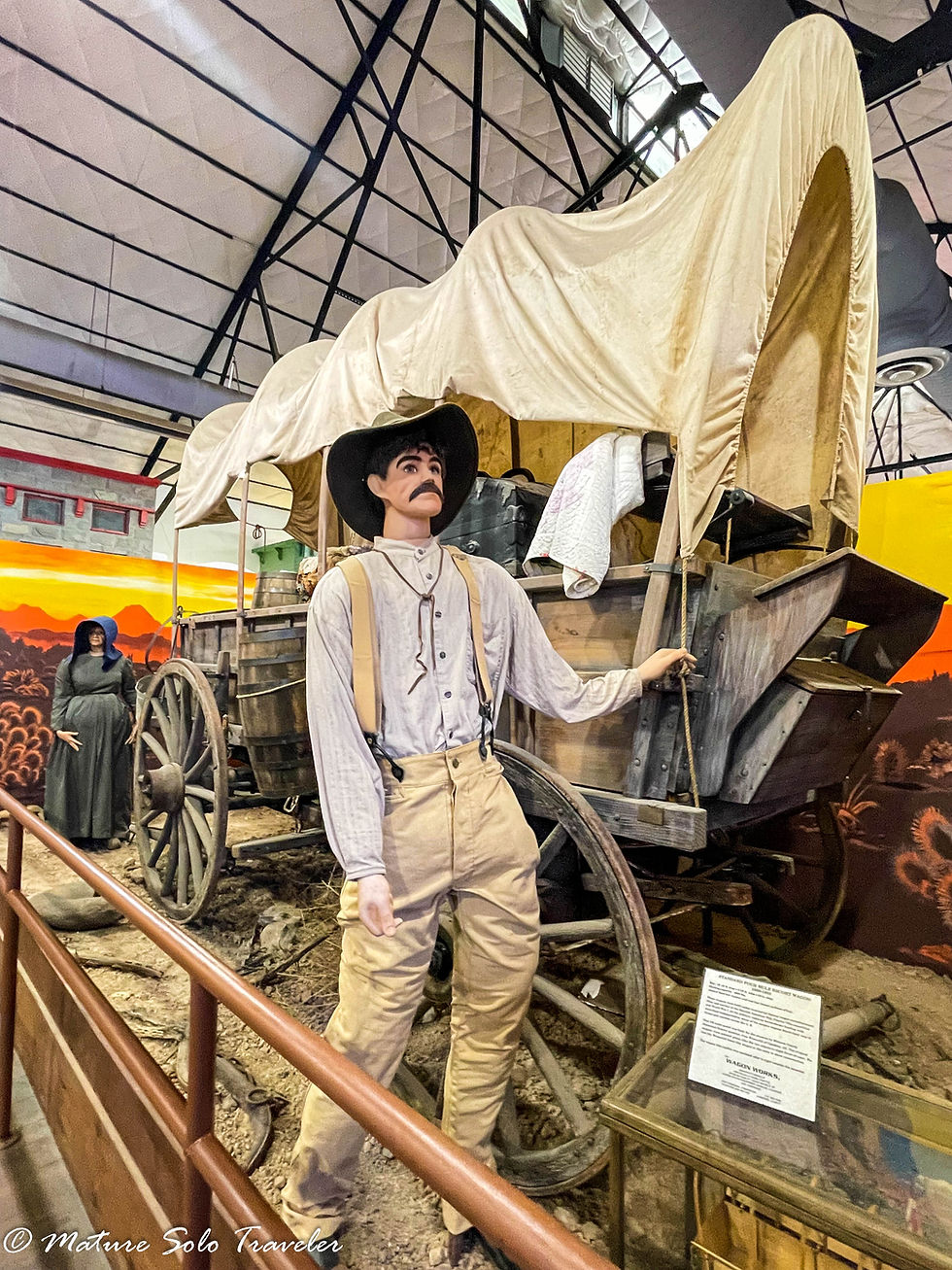
In 1883 a railway track was completed between Needles in California and Albuquerque in New Mexico and opened up more of the west and assisted with the cross-country distribution of goods and services by the railway. The town is named after Lewis Kingman, a Surveyor and Engineer of the railroad. From 1880 to 1883 he surveyed the route from Alburquerque to the Colorado River, crossing the river at Needles in California.
More than eighty passenger and freight trains a day still pass by the Kingman Museum. The Steam Engine #3759 is a popular stop and located across the road from the museum in Locomotive Park. Built in 1928 this locomotive ran between Los Angeles and Kansas City for over 20 years. It was given to the city of Kingman in 1957.
A display in the museum is dedicated to Fred Harvey and the Harvey Girls. Over 100,000 women in the late 19th and early 20th century worked in restaurants along the railway, managed by entrepreneur Fred Harvey. For the first time, these young women were able to choose employment away from their homes, how to spend their spare time, and who and when to marry. Photographs and personal remembrances of the women are on display in the museum. Read my article about the Harvey Girls here


In 1915 the National Old Trails Highway became the first coast-to-coast road. It ran alongside the railway tracks. When the newly aligned Route 66 was created in 1926, it ran along some of the Old Trails road.
Quotes from the 1939 book The Grapes of Wrath by John Steinbeck are inscribed on wall posters. Readers can get a sense of the despair, desperation, hope and joy of the refugees as they travelled the road. As the words resonate in your mind and you look at the life-sized wagon and its people, you get a real sense of the hardships they faced. How many people in USA today could suffer this way? Thank goodness they don’t have to.
The Grapes of Wrath is the story of Tom Joad and his family who leave Oklahoma and travel west along Route 66. They encounter hardships, many trials and tribulations along the way. A life-sized panoramic display is set up in the museum and depicts the hard journey that not only the Joad family suffered, but that of thousands of displaced migrants who fled the Great Depression and the dustbowls in the midwest in the hopes of a better life in California.

"The people in flight streamed out on 66, sometimes a single car, sometimes a little caravan. All day they rolled slowly along the road, and at night they stopped near water.” - quote from the Grapes of Wrath. In 1940 the book was made into a movie starring Henry Fonda as Tom Joad.

Travelers along the road enjoyed ‘riding shotgun’ with the trains. Gas stations, roadside diners, restaurants, motels, grocery stores, general stores, trading posts and drive-in theatres all sprang up along route 66 as more and more vehicles travelled the road during the 1950s and 1960s. This was an exciting and interesting road trip with lots of new things to see and do. A fun part of the museum is a streetscape of replica buildings from this time.
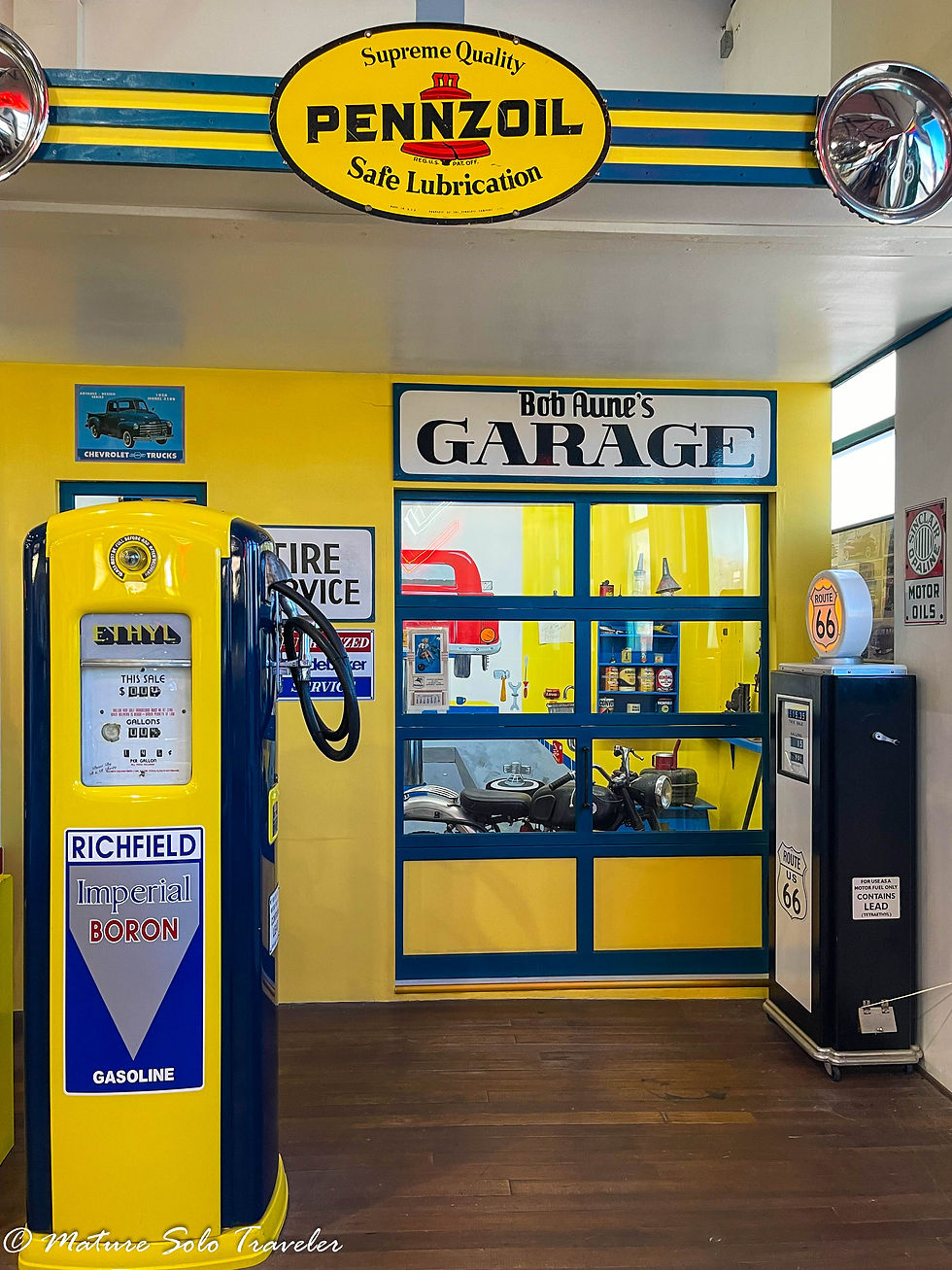
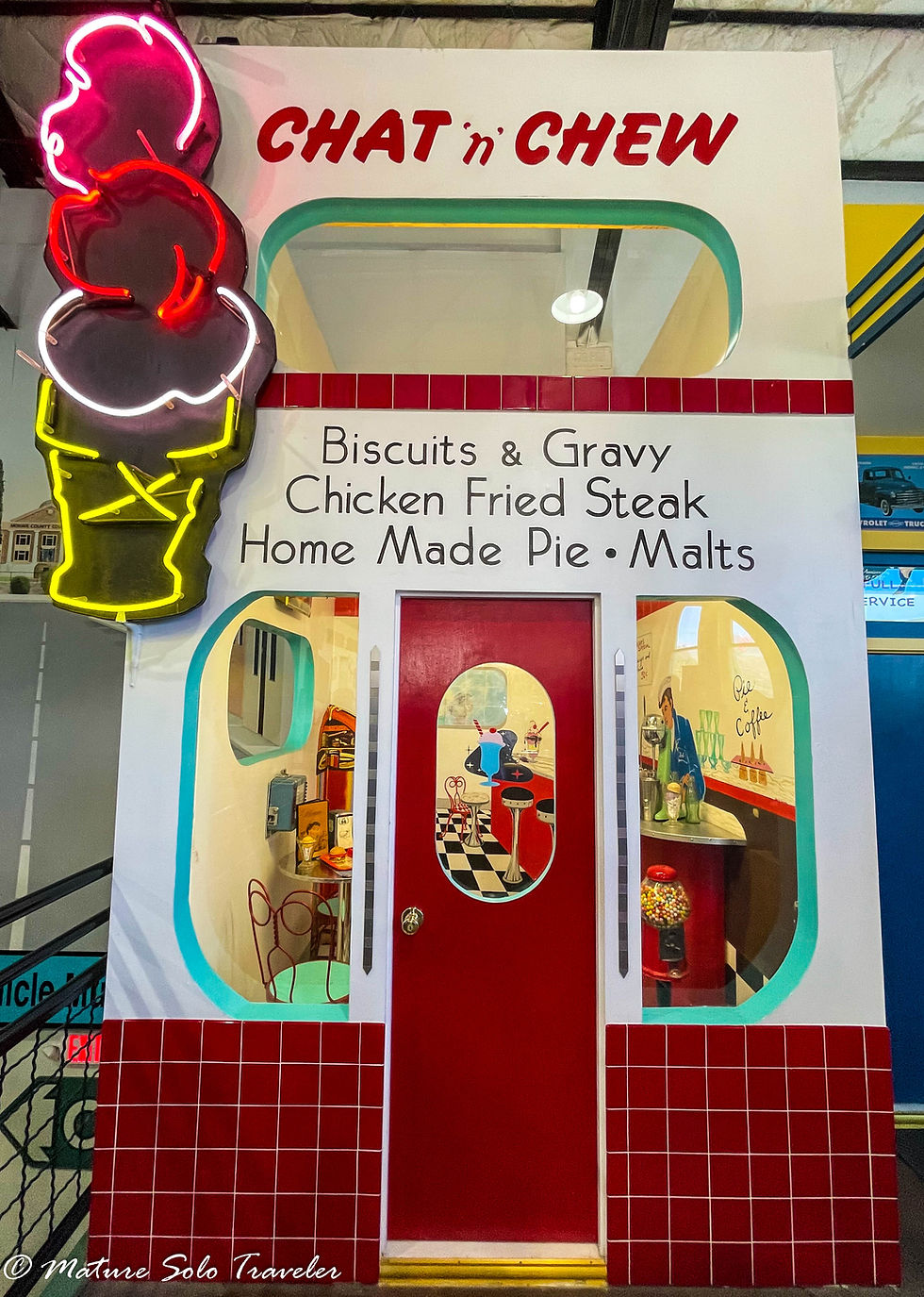

Beautifully restored cars are also on display, such as this immaculate yellow Studebaker.

In 1957, President Eisenhower established the interstate national highway system. This allowed faster and easier motor vehicle travel than the quirky Route 66. The sad part of this was that it bypassed a lot of towns. As travelers no longer stopped in the towns, businesses no longer had trade and had to shut down. Food, gas and lodging were purchased from generic gas stations and cookie cutter hotels along the new roads. In addition to this, air travel became more accessible and popular. People no longer took driving family vacations.
However, the nostalgia for the old Mother Road, created a new tourism venture. People started to want to rediscover the slower pace and have started to vacation in these bypassed towns. Driving Route 66 has become a popular experience for many Americans and overseas tourists.
Angel Delgadillo (born in Seligman Arizona in 1927) is an American barber and businessowner. He was instrumental from 1987 in campaigning for historical Route 66 signage on the former highway. Following this Arizona practice, every state on Route 66 has established similar initiatives. In 1978 over 9,000 vehicles were going through Seligman each day. When the I-40 bypassed his town, the town struggled to stay alive. For ten long years Angel and his supporters worked hard to get the Route recognized as an historical road. Their hard work was finally rewarded in 1987. The Kingman Route 66 museum is planning a display dedicated to Angel soon.
A resurgence in the search for nostalgia has reawakened the old Route 66. The I-40 rest stops are uninteresting compared to the small-town hospitality and uniqueness of the small-town businesses. Tourists are realizing the gems these places offer and getting off the superhighway to enjoy the offerings available in towns such as Kingman.
One section of the museum is dedicated to electric vehicles, most are on loan. In 2024, the cars will find a new home in a larger 19,500ft space in Kingman.
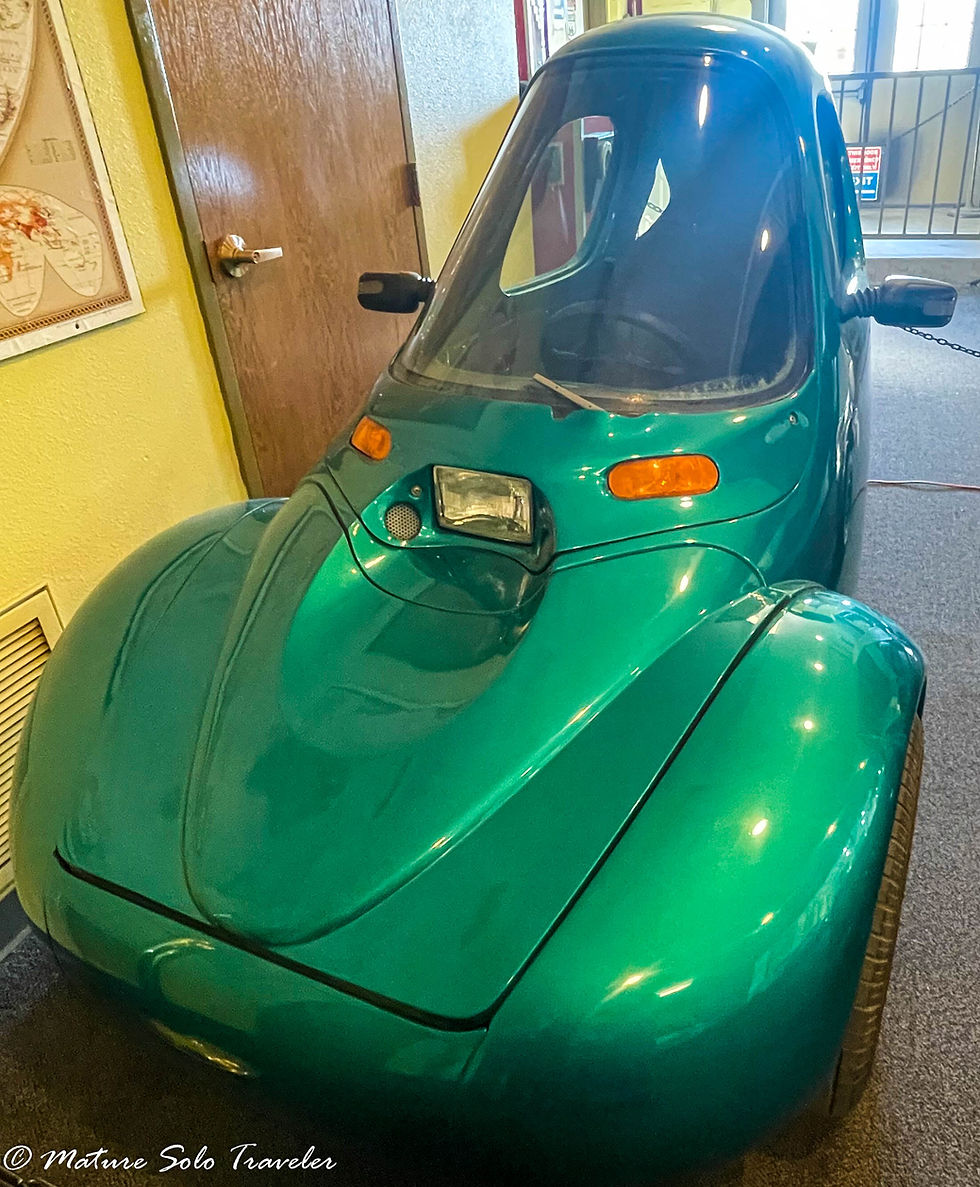
While many are not road registered, they are operable and there is the possibility that when in their new home, there may be rides in the vehicles available.
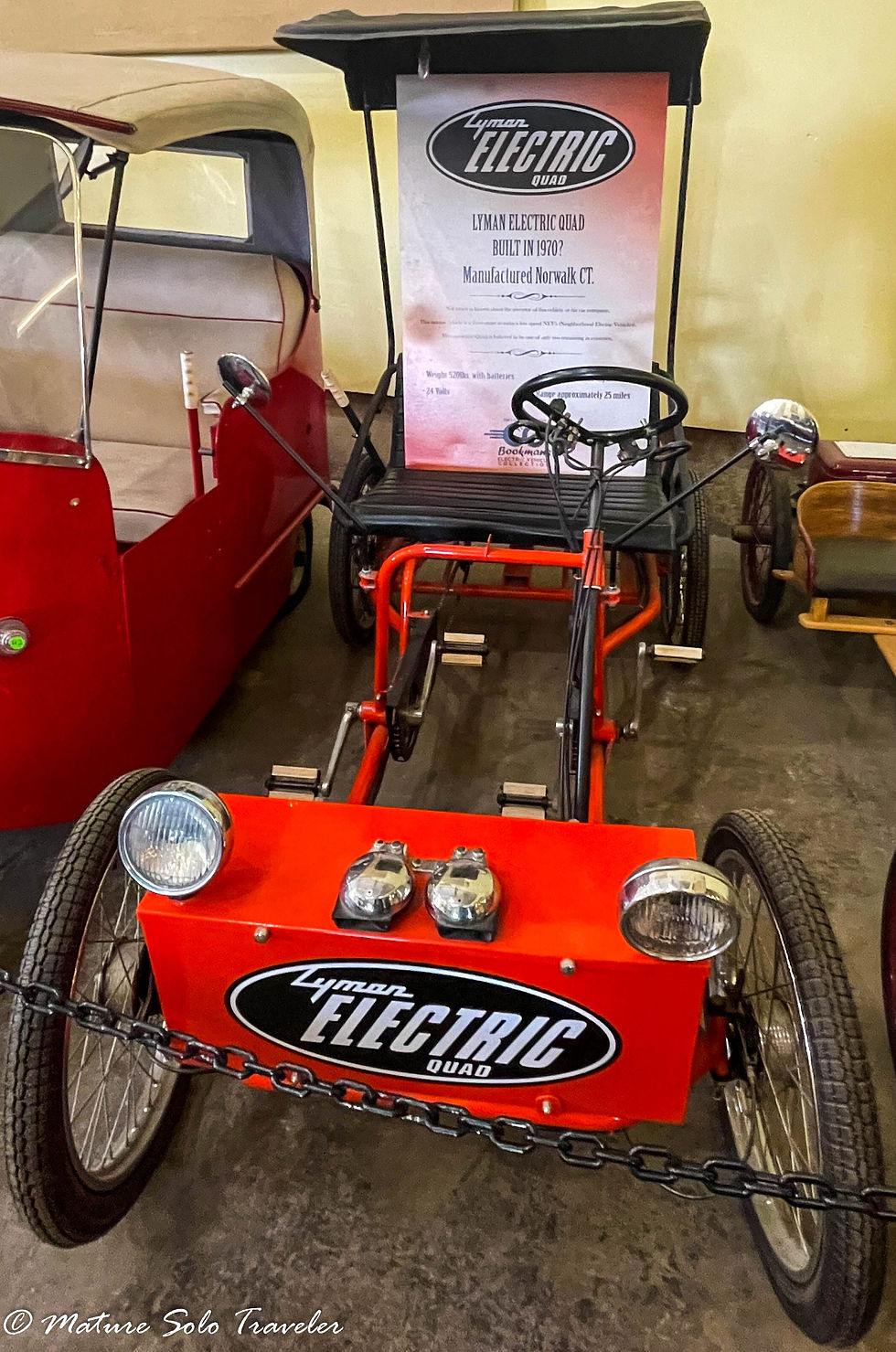
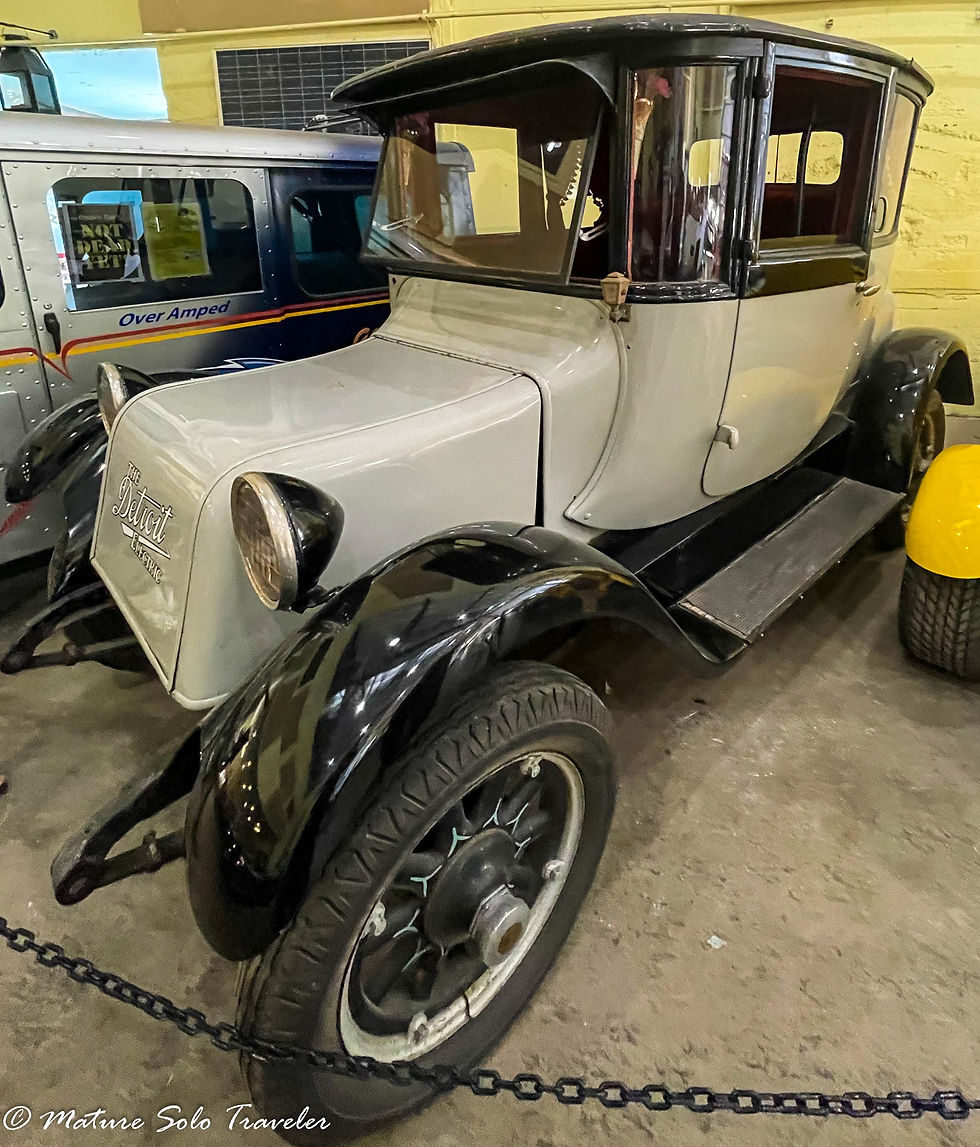
Placed eleventh at the World Solar Challenge in 2011 is “Xenith”, the Stanford University solar race car. This vehicle can travel at 55-60mph using sun power alone and is the first solar panel car to use flexible glass for panel encapsulation.
More information on the electric car organization can be found here

In October, there is a Route 66 festival for two to four days. By the 100th anniversary, in 2026, it will be a four-day event. Cars, bikes, vintage campers, pin up contest and live music will all feature in this extravaganza event.
A celebration of the art of the route occurs during the festival. Decommissioned road signs are available to graffiti and tag artists to decorate. Past signs are on display in the museum.

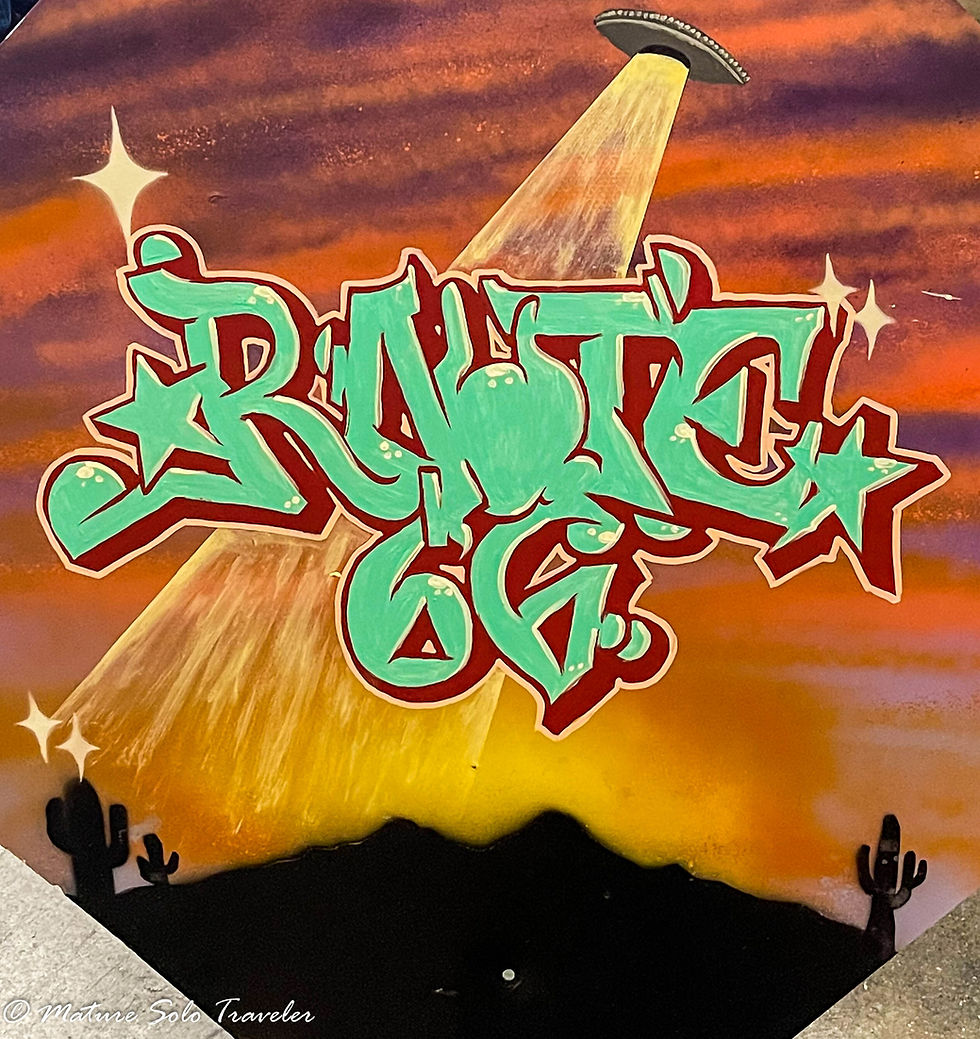
Sidewalk and character artists decorated the nearby eight-acre historic park that was a Route 66 rest stop.
Today, there are electric charging stations outside the museum, a sign of changing times. When you see the old steam engine in the background of the photo below and the electric charging station in the front, it is amazing just how far travel through the USA has advanced over the years. Seeing the changes all in one place at the museum is a fun and interactive trip through history.

Your entry ticket also includes admittance to the Mojave history museum and the Bonelli historic house in town.
Kingman Visitor Centre
120W. Andy Devine Avenue
Kingman Arizona USA

Happy Travels!
#maturesolotraveler #usa #solotravel #solotraveler #solotraveller #nationalgeographic #arizona #kingman #route66 #museum #usa






Comments